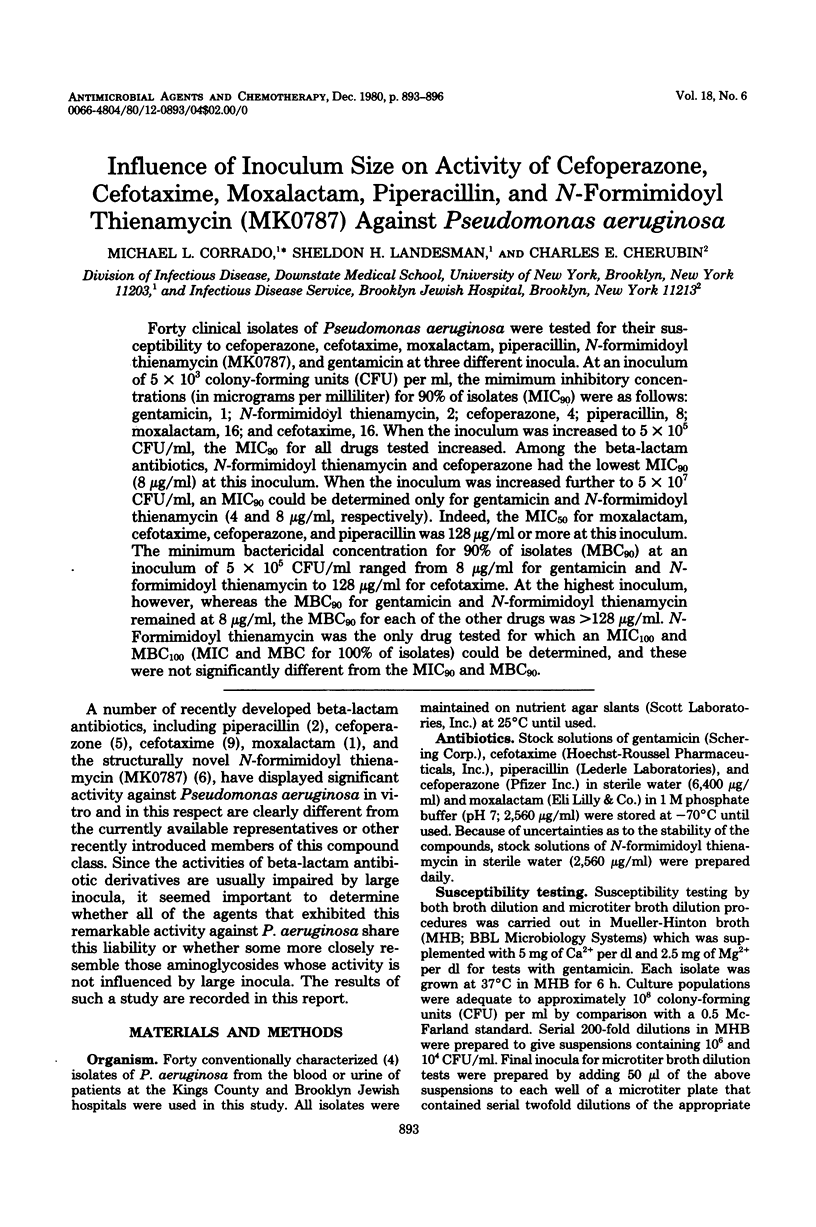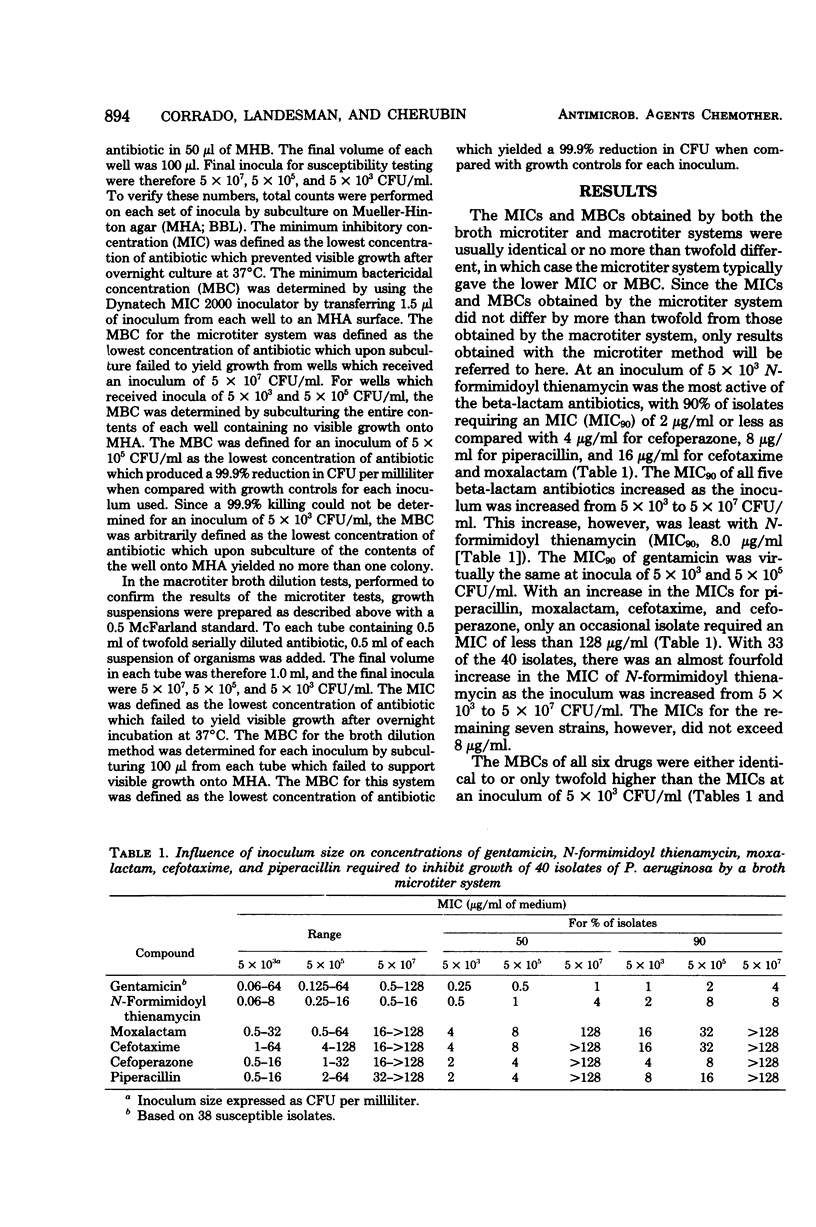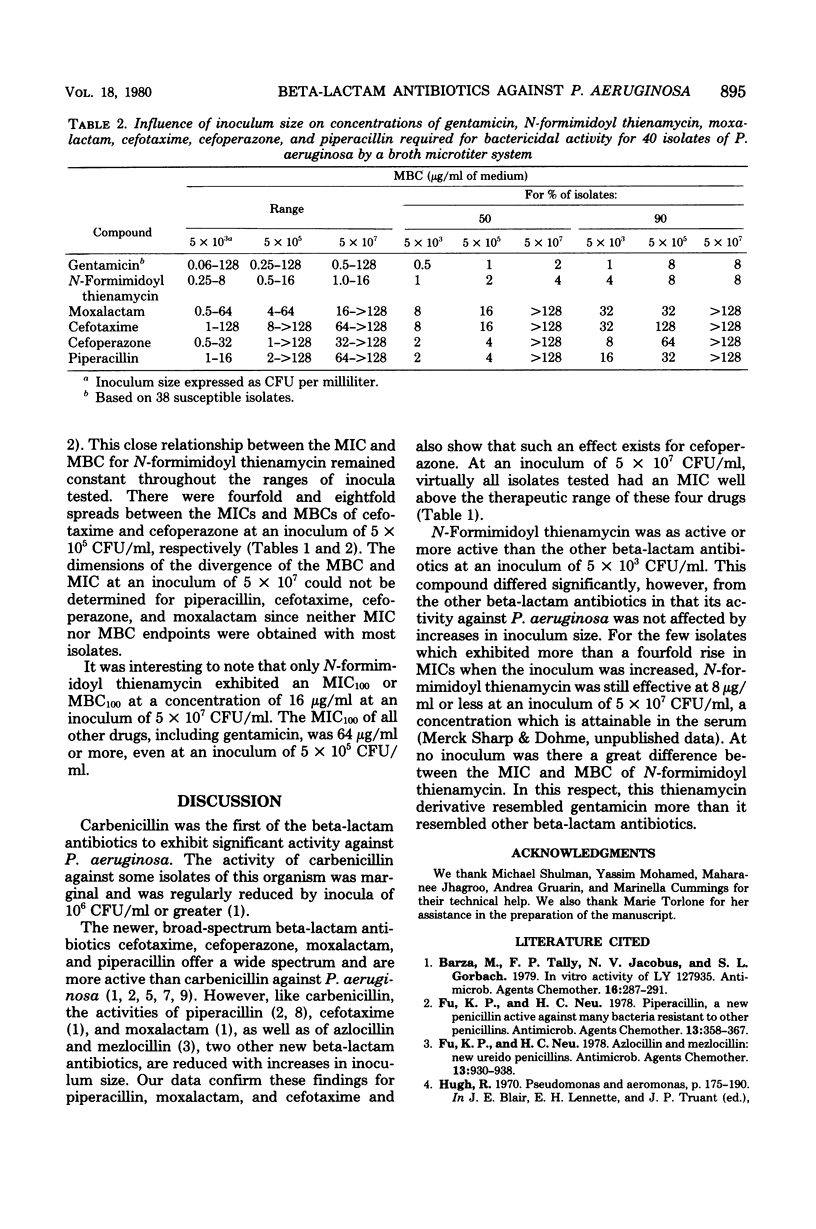Abstract
Forty clinical isolates of Pseudomonas aeruginosa were tested for their susceptibility to cefoperazone, cefotaxime, moxalactam, piperacillin, N-formimidoyl thienamycin (MK0787), and gentamicin at three different inocula. At an inoculum of 5 x 10(3) colony-forming units (CFU) per ml, the minimum inhibitory concentrations (in micrograms per milliliter) for 90% of isolates (MIC90) were as follows: gentamicin, 1; N-formimidoyl thienamycin, 2; cefoperazone, 4; piperacillin, 8; moxalactam, 16; and cefotaxime, 16. When the inoculum was increased to 5 x 10(5) CFU/ml, the MIC90 for all drugs tested increased. Among the beta-lactam antibiotics, N-formimidoyl thienamycin and cefoperazone had the lowest MIC90 (8 micrograms/ml) at this inoculum. When the inoculum was increased further to 5 x 10(7) CFU/ml, an MIC90 could be determined only for gentamicin and N-formimidoyl thienamycin (4 and 8 micrograms/ml, respectively). Indeed, the MIC50 for moxalactam, cefotaxime, cefoperazone, and piperacillin was 128 micrograms/ml or more at this inoculum. The minimum bactericidal concentration for 90% of isolates (MBC90) at an inoculum of 5 x 10(5) CFU/ml ranged from 8 micrograms/ml for gentamicin and N-formimidoyl thienamycin to 128 micrograms/ml for cefotaxime. At the highest inoculum, however, whereas the MBC90 for gentamicin and N-formimidoyl thienamycin remained at 8 micrograms/ml, the MBC90 for each of the other drugs was greater than 128 micrograms/ml. N-Formimidoyl thienamycin was the only drug tested for which an MIC100 and MBC100 (MIC and MBC for 100% of isolates) could be determined, and these were not significantly different from the MIC90 and MCB90.
Full text
PDF



Selected References
These references are in PubMed. This may not be the complete list of references from this article.
- Barza M., Tally F. P., Jacobus N. V., Gorbach S. L. In vitro activity of LY127935. Antimicrob Agents Chemother. 1979 Sep;16(3):287–292. doi: 10.1128/aac.16.3.287. [DOI] [PMC free article] [PubMed] [Google Scholar]
- Fu K. P., Neu H. C. Azlocillin and mezlocillin: new ureido penicillins. Antimicrob Agents Chemother. 1978 Jun;13(6):930–938. doi: 10.1128/aac.13.6.930. [DOI] [PMC free article] [PubMed] [Google Scholar]
- Fu K. P., Neu H. C. Piperacillin, a new penicillin active against many bacteria resistant to other penicillins. Antimicrob Agents Chemother. 1978 Mar;13(3):358–367. doi: 10.1128/aac.13.3.358. [DOI] [PMC free article] [PubMed] [Google Scholar]
- Tally F. P., Jacobus N. V., Gorbach S. L. In vitro activity of thienamycin. Antimicrob Agents Chemother. 1978 Sep;14(3):436–438. doi: 10.1128/aac.14.3.436. [DOI] [PMC free article] [PubMed] [Google Scholar]
- Tsuchiya K., Kondo M., Nagatomo H. SCE-129, antipseudomonal cephalosporin: in vitro and in vivo antibacterial activities. Antimicrob Agents Chemother. 1978 Feb;13(2):137–145. doi: 10.1128/aac.13.2.137. [DOI] [PMC free article] [PubMed] [Google Scholar]
- Verbist L. In vitro activity of piperacillin, a new semisynthetic penicillin with an unusually broad spectrum of activity. Antimicrob Agents Chemother. 1978 Mar;13(3):349–357. doi: 10.1128/aac.13.3.349. [DOI] [PMC free article] [PubMed] [Google Scholar]
- Wise R., Rollason T., Logan M., Andrews J. M., Bedford K. A. HR 756, a highly active cephalosporin: comparison with cefazolin and carbenicillin. Antimicrob Agents Chemother. 1978 Dec;14(6):807–811. doi: 10.1128/aac.14.6.807. [DOI] [PMC free article] [PubMed] [Google Scholar]


